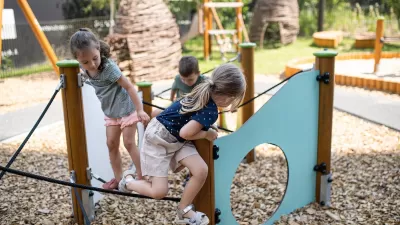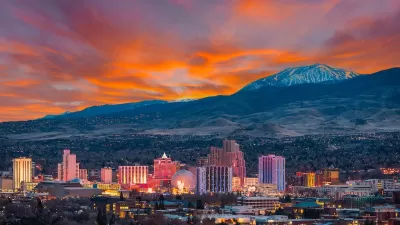Business owners, city leaders, and community members would love to see the struggling Anacostia neighborhood transformed into a bustling retail zone. But onerous parking requirements in DC's outdated zoning code are stifling the city's own ambitions.
"[T]ransit-rich and pedestrian-friendly, with a compact downtown served by a Metro station, numerous bus lines, and a Circulator route," D.C.'s Anacostia neighborhood has been targeted as a prime candidate for growth by the city's Office of Planning. Aaron Wiener investigates the central obstacle preventing that redevelopment: the city's own parking requirements.
"[A]ccording to the city’s zoning code—which dates back to 1958, when public transit had fallen out of fashion and automobiles were ascendant—retailers there are required to provide on-site parking for customers, regardless of the customers’ need or the retailer’s ability to meet it. As a result, several businesses interested in opening in Anacostia have changed their minds or been forced to endure long and expensive delays while they apply for special exemptions."
"It’s a challenge that’s playing out across the city," adds Wiener, "with some developers opting to apply for exemptions from the parking minimums, which are usually granted, while others are discouraged from undertaking projects. But it’s a particularly acute problem in Anacostia, where retail is sorely needed and the market is still sufficiently unproven that developers are reluctant to take risks on ventures that could lose money. A requirement to build parking or apply for a variance adds an extra expense that can scare would-be retailers away—particularly when there’s not even space on site for parking, a common scenario in the historic neighborhood."
FULL STORY: Out, Damned Spot! How D.C.’s Onerous Parking Requirements Slow Development

Trump Administration Could Effectively End Housing Voucher Program
Federal officials are eyeing major cuts to the Section 8 program that helps millions of low-income households pay rent.

Planetizen Federal Action Tracker
A weekly monitor of how Trump’s orders and actions are impacting planners and planning in America.

Ken Jennings Launches Transit Web Series
The Jeopardy champ wants you to ride public transit.

Rebuilding Smarter: How LA County Is Guiding Fire-Ravaged Communities Toward Resilience
Los Angeles County is leading a coordinated effort to help fire-impacted communities rebuild with resilience by providing recovery resources, promoting fire-wise design, and aligning reconstruction with broader sustainability and climate goals.

When Borders Blur: Regional Collaboration in Action
As regional challenges outgrow city boundaries, “When Borders Blur” explores how cross-jurisdictional collaboration can drive smarter, more resilient urban planning, sharing real-world lessons from thriving partnerships across North America.

Philadelphia Is Expanding its Network of Roundabouts
Roundabouts are widely shown to decrease traffic speed, reduce congestion, and improve efficiency.
Urban Design for Planners 1: Software Tools
This six-course series explores essential urban design concepts using open source software and equips planners with the tools they need to participate fully in the urban design process.
Planning for Universal Design
Learn the tools for implementing Universal Design in planning regulations.
Ada County Highway District
Clanton & Associates, Inc.
Jessamine County Fiscal Court
Institute for Housing and Urban Development Studies (IHS)
City of Grandview
Harvard GSD Executive Education
Toledo-Lucas County Plan Commissions
Salt Lake City
NYU Wagner Graduate School of Public Service





























